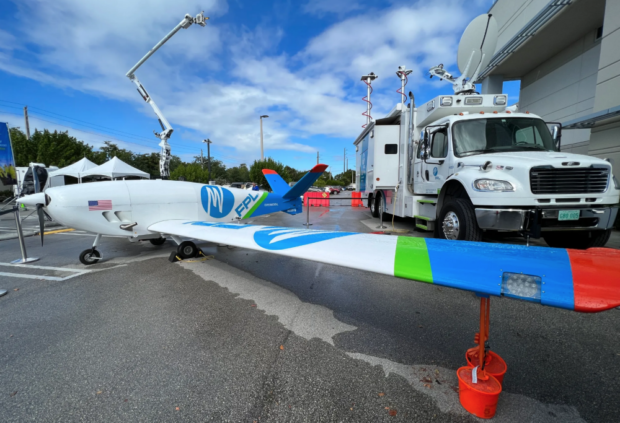The newest tool in Florida Power & Light’s storm-ready kit has a wingspan slightly longer than a Cessna, can fly 1,000 miles at a time and cost the utility’s customers a cool $1.2 million.
This fixed-wing drone, called FPLAir One, will be used to survey storm damage across Florida, which the utility hopes will streamline restoration efforts to get power back on after an outage sooner.
Without this unmanned drone — which can weigh up to 1,800 pounds and sports the utility’s colorway of blue, green and orange — FPL crews would observe damage either in bucket trucks or by using small drones to get a bird’s-eye view.
There are two drawbacks to those methods. First, this work can’t be accomplished remotely; second, this surveillance can’t safely take place while the winds are more than 35 mph.
“Because it (FPLAir One) can fly in tropical storm-force winds, we can get out sooner than we could before,”
said Marshall Hastings, a FPL spokesman. Plus, FPL can send the drone across the state to understand what work needs to be done before sending a team in to make the necessary fixes.
After FPLAir One’s maiden voyage, set to take place in August, the aircraft will become the first large-scale drone to be flown for commercial use outside of Federal Aviation Administration test sites, the company said.
Footage shows FPL drone capabilities
The drone was on display Thursday during the utility’s annual storm drill in Riviera Beach, along with other technological advances such as a remote-controlled tree trimming truck and an autonomous substation rover.
FPL employees practiced their response to a made-up Category 3 storm named Hurricane Constantine during this weeklong drill. In this scenario, the storm skirted the west coast of the state before making landfall in the Panhandle, modeled after the path of Hurricane Dennis in 2005.
Nearly 100 employees from a variety of departments such as vegetation management, customer service, information technology sat at computers or gathered at conference tables to sort out staging sites, customer outages and more. Twenty-four hours after the fictional storm hit, nearly 250,000 customers were without power, a figure displayed in big red numbers that all employees in the command center could see.
Source: Palm Beach Post


Who builds it? What hp engine
Navmar Applied Sciences Teros
power plant is a Lycoming IO-235 with Full Authority Digital Engine Controls (FADEC). This four-cylinder, air-cooled, horizontally opposed piston engine generates up to 116 hp.
See more recent post: https://www.uasvision.com/2022/08/18/florida-utilitys-new-drone-can-speed-hurricane-recovery/